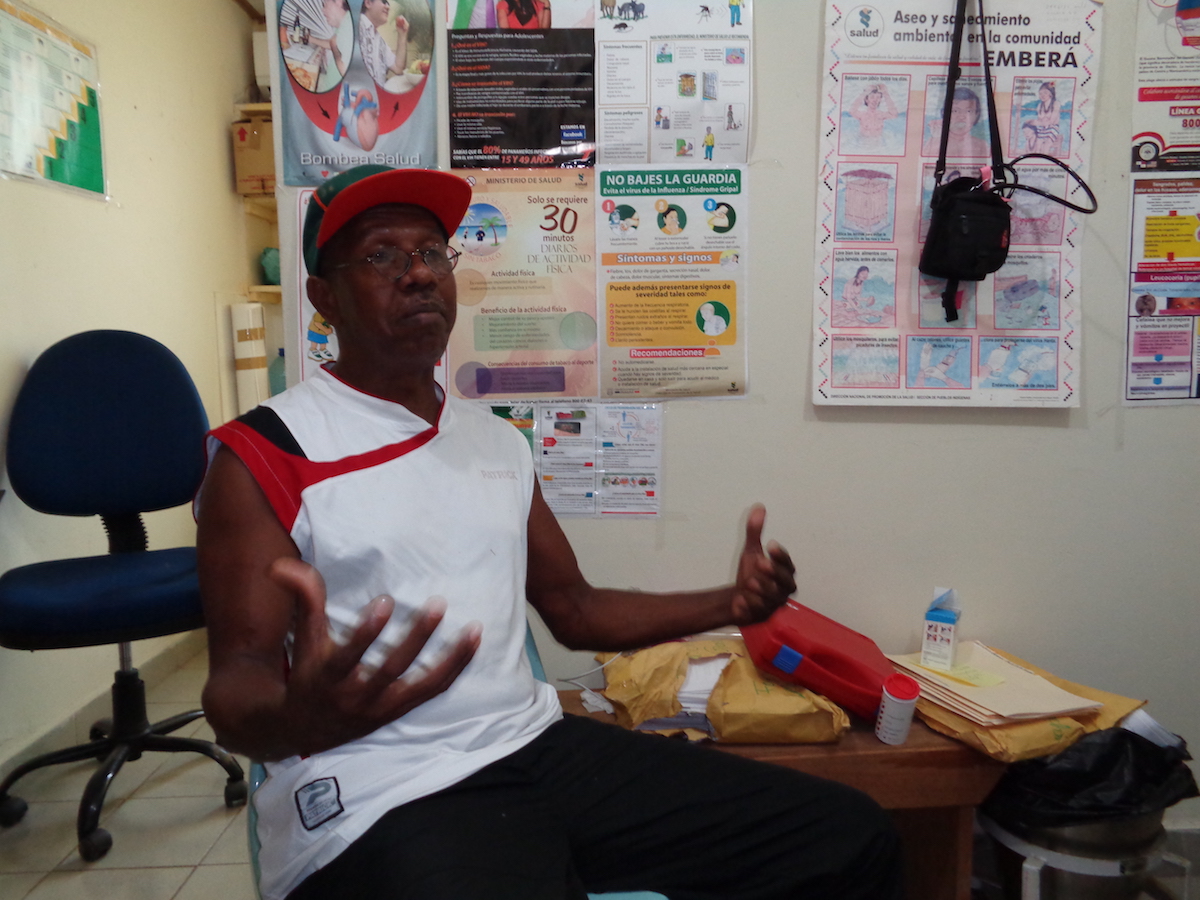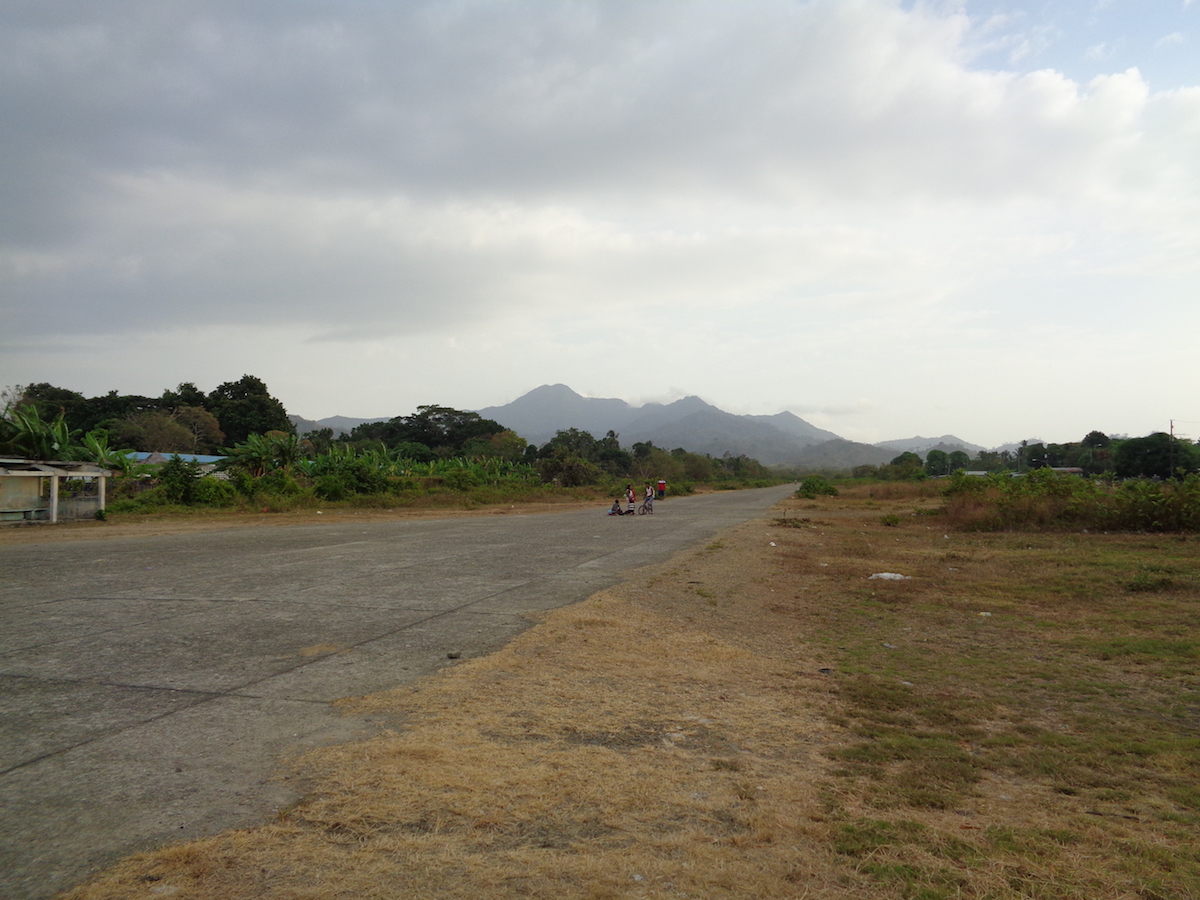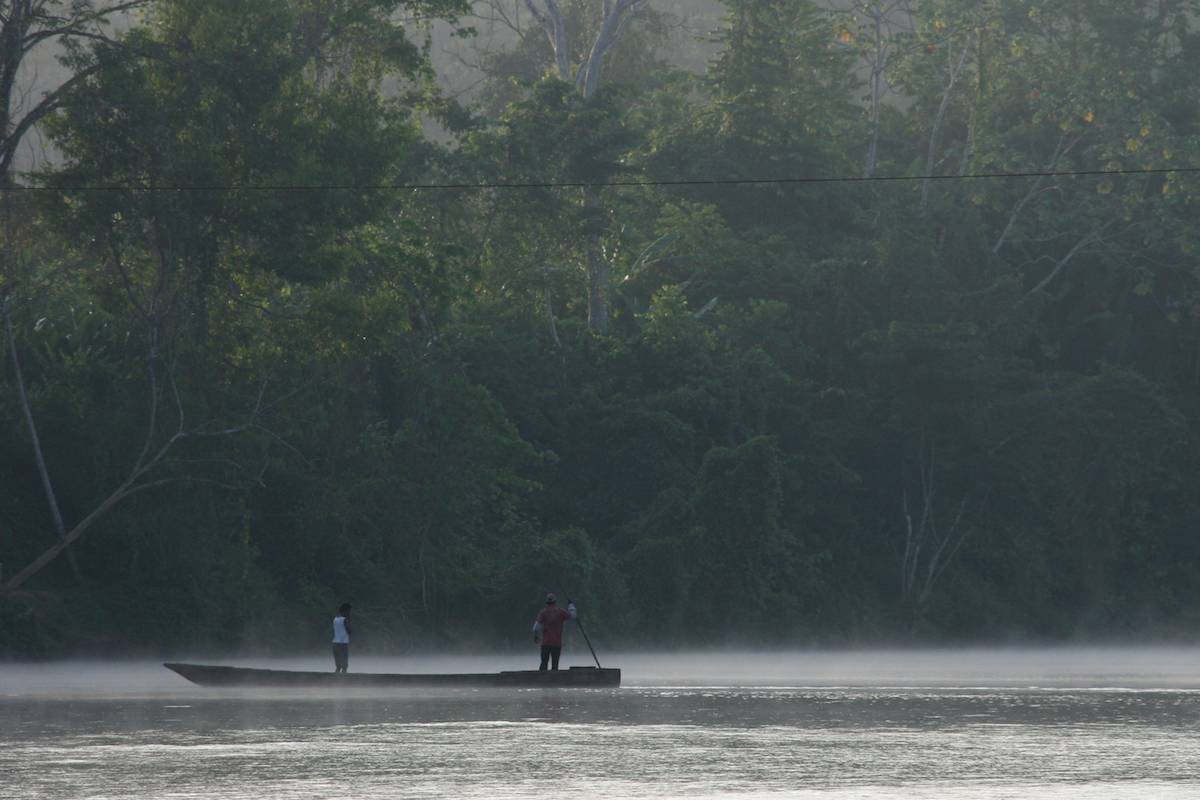- Darién is known as the “forgotten province” in Panama. There is very little presence of government institutions in the province, which borders Colombia.
- Conservationists, as well as Panama’s Ministry of the Environment, are especially concerned about Darién National Park in light of the fact that the ranching industry has expanded to some parts of the park, such as Punta Garachiné.
- One cause of the expansion is related to settlement by small farmers who convert the land into pastures in order to later sell them to landowners.
- The Ministry of the Environment has drafted a bill that proposes the creation of forestry incentives to promote conservation. The legislative initiative establishes a fund of 15 million dollars annually to incentivize the development of conservation or recuperation projects for damaged areas
DARIÉN PROVINCE, Panama – David Ramos’ ranch is in the community of Salodio, in Darién Province, in the eastern part of Panama. From there, one can observe Darién National Park, a natural reserve that has been declared a World Heritage Site by the United Nations Educational, Scientific and Cultural Organization (UNESCO).
A one-lane cobblestone street, originating in Garachiné, brings you towards Ramos’ ranch. Garachiné, a town bordering the Pacific Ocean, can only be accessed via boat or air travel. It is a town of fishers and ranchers, and some of them have ranches that share a border with the protected area.
The drive from Garachiné to Salodio takes about 40 minutes. It’s a repetitive trip; both sides of the road are filled with endless pastures. Some of the pastures are filled with cattle, and others are just improved pasture or weeds that have evolved in relation to the use of genetically modified seeds.
Ramos, who is almost 70 years old, came to Darién 30 years ago from Veraguas, in central Panama, where he had five hectares of land and nine children to support. Thirty years ago, the country was governed by a military dictatorship; since then, large landowners have begun to take control of the country, with the exception of Darién. “There was no longer any land to work with,” remembers Ramos. In 1987, he decided to move to Darién Province. He now owns 219 hectares and 130 cattle.

“I needed land that I could farm in order to feed my children, because in Veraguas, there wasn’t any,” he says. Darién has become the destination for small farmers who haven’t been able to find enough land to farm in central Panama. Ramos started with 19 hectares, which were cultivated and later converted into pastures for cattle. Over time, he acquired more land until he eventually reached the 219 hectares that he currently owns, 40 of which are still forested. Ramos says that, at the moment, he hasn’t thought about converting those 40 hectares into pastures, but he also doesn’t guarantee that the forest will not be cut down in the future.
“My ranch doesn’t affect [Darién National Park] because it’s far away,” he says. Ramos’ land borders other ranches that, in turn, are inside the protected area’s buffer zone.
However, the small farmer recognizes that in recent years, deforestation in the agricultural area has increased —and that ranching has moved into Darién National Park.

The ranching industry in numbers
Darién is known as the “forgotten province” in Panama. There is very little presence of government institutions in the province, which also borders Colombia. This longstanding absence has allowed the hoarding of wooded areas and their subsequent devastation. With time, protected areas like Canglón and Filo del Tallo —which form part of the Mesoamerican Biological Corridor, which also includes Darién National Park— were converted into pastures.
Conservationists, as well as Panama’s Ministry of the Environment, are especially concerned about Darién National Park in light of the fact that the ranching industry has expanded to some parts of the park, such as Punta Garachiné.

Historically, the majority of ranching development in Panama has been in the western central region. Until 2000, the primary sector, which includes agricultural activity, was one of the most important sectors in Panama; small farmers have been displaced by large landowners. In Darién Province, many small farmers, like Ramos, saw an opportunity to obtain land for agricultural development as well as ranching. Because of this, Darién has experienced a dramatic increase in the number of cattle in the last few decades.
The latest figures from the Comptroller General of the Republic of Panama, the organization responsible for processing the country’s statistics, date back to 2011. That year, the number of head of cattle more than doubled in Darién Province, reaching 184,000. This represents a 118.6 percent increase compared to the figure from 10 years prior (2001), when there were only around 84,000 cattle. In other words, during this period, the number of cattle in Darién Province increased by over 100,000, demonstrating the largest increase in ranching activity in the country. Meanwhile, in the central provinces of Los Santos and Herrera, ranching activity diminished. Historically, these provinces had some of the highest numbers of ranches in the country. In fact, those native to the region were known as the “great devastators of the country.”

“About 15 years ago, the ranching industry began to develop extensively in Darién. Before, families had small parcels and a few cattle,” remarked Rogelio Sambrano, president of the Alliance for a Better Darién (AMEDAR).
Government entities don’t have data about the number of hectares that have been converted to pastures. However, experts believe that the number of hectares is large compared to the number of cattle. The government has begun to look for an alternative to the expansion of ranching in the region.
The number of hectares that Ramos has compared to the number of cattle brings us close to this reality. If his 40 forested hectares are subtracted from his total of 219 , Ramos has 179 hectares of pasture. This means that he has about 1.4 cattle per hectare, taking into account that he owns 130 cattle in all.
For the ranchers of the area, there is nothing sinful about maintaining that enormous difference between the number of hectares of pastures versus the number of heads of cattle. However, for conservationists, it represents a danger for Darién National Park. “The farmers make pastures to rent out because they know that that means economic income,” says Sambrano.
Part of the cause of the expansion of the ranching industry is related to the settlement of the land by small farmers, who convert the land into pastures in order to later sell them to landowners. Manuel Zárate is an environmental hydraulic engineer and social activist who has analyzed the agricultural history of the country. He explains that this phenomenon has caused the devastation of forested areas and, specifically in Darién, the penetration of the protected area.

The government recognizes possessory rights —that is, the farmers work the land and have the right to the use of that land, which the landowners take advantage of because they stop buying those possessory rights, which are later turned into property rights. This way, the farmer leads the way cutting down the forest while the big ranchers are accumulating the land. That vicious cycle of colonization has caused ranchers to move on into Darién National Park, says Zárate.
“In the end it’s a process of landowner settlement because the farmers only have the possessory right, but the big [landowners] acquire the property rights,” he claims.
Additionally, it has sometimes been the case that small farmers convert the land into pastures in order to rent them out to large ranchers and later stop selling them, and the deforestation continues. This is a reality that is accepted by the Secretary-General of the Ministry of the Environment, Félix Wing.
“It has been a historic practice in the country, and in the specific case of Darién, it’s worse because this ancestral practice has damaged the park,” said the official.
What needs to be done in Darién Province?
Environmentalists worry even more because those native to the Emberá Wounaan region, which borders Darién National Park, have also begun to take up ranching, claims Líder Sucre, an environmental activist who has traveled throughout the protected area.
The Comptroller General’s statistics reaffirm the fears of conservationists. The natives—to whom property rights do not apply, but rather the principle of collective land—went from owning 637 cattle in 2001 to owning 1,369 in 2011. This is an increase of 114.9 percent, according to the state.
“The natives have gotten into ranching—not on a large scale, but they are doing it,” says Didier Martínez, a rancher native to Garachiné.

Wing recognizes that because the ranching industry has been able to expand into the protected area, it is one of the factors that has had the greatest effect on Darién National Park. This “was the fault” of past administrations, especially between 2009 and 2014, when former entrepreneur Ricardo Martinelli was president.
Wing added that Darién National Park has not had enough forest rangers to supervise the entire forest reserve. Additionally, there isn’t enough communication equipment throughout the entire park, nor is there an appropriate uniform.
When Panama’s current president, Juan Carlos Varela, took office in July 2014, there were 190 forest rangers who covered all of Panama’s protected areas. In the almost three years since then, that number has increased to 255. Twenty-three of them are in Darién National Park, which covers 575,000 hectares. While the Ministry of the Environment could not specify exactly how many forest rangers controlled the protected area up until July 2014, Wing points out that the number “had been reduced to its very lowest.”
It’s evident, he added, that because of the lack of presence of forest rangers, people have taken advantage of the protected area. “Not all farmers have the conscience to protect the park,” concluded Ramos.

The Ministry of the Environment was created during the current administration, replacing the National Authority of the Environment (ANAM), an organization that was affiliated with the Ministry of the Economy and Finance.
“We know that ANAM lost its strength during the previous administration and this allowed the devastation of protected areas not only in Darién, but also in other parts of the country,” said Wing. Before his position in the Ministry of the Environment, he was a lawyer with ties to environmental groups.
Wing also mentioned structural problems that have allowed for the expansion of ranching, to the detriment of the forests. “The transformation of forests into agricultural land for ranching guarantees that big and small farmers will have access to loans from [the National Bank of Panama and the Bank of Agricultural Development],” says Wing.

This problem came to light during the consultations that the Ministry of the Environment has held for Darién’s management plan. The problem is rooted in the fact that the banks don’t recognize the value of forests when they’re giving out loans to agriculturalists and ranchers, Wing says. He stresses that funding the agricultural sector is conditioned to the production of land, whether it be for cultivating agricultural products or for ranching.
Bank managers, added Wing, claim that the “deformation” [referring to the structural problems of the banking system that allowed cattle expansion] is in the system in order to award loans, because in the bank’s process of evaluating land for a loan, forests barely have any value. “The problem is that forests don’t guarantee the return of the loan,” says Wing.
The old Agricultural Code of the country even considered forests to be idle or uncultivated land, added Wing amusedly.
Banks generally assume that the only lands that do guarantee value are those that have been transformed. By this perspective, forests just don’t have that value to assure the return of the loan, explains Zárate, the environmental engineer and agricultural expert. “A farmer with possessory rights [to the land] has more opportunity to agree to a financing than someone who owns land covered in forest, because the land is going to produce more,” added Zárate.
This is the type of practice that conservationists and the Ministry of the Environment want to put the brakes on in order to guarantee that the ranching industry doesn’t keep encroaching on protected areas like Darién National Park—especially Punta Garachiné. This is the home of the last dry forest relict in the protected area, which is the most important in the country. Punta Garachiné is an entrance to the park via the ocean. According to environmentalist Líder Sucre, it’s where the reserve’s protection efforts should be focused because there, the tropical dry forest ecosystem and the coastal marine ecosystem mix together.
The ranching industry has reached this area. Evaristo Lay is one of two general medical doctors who works at Garachiné Health Center, and is native to the province. In 1976—after having studied medicine in Mexico—he acquired 150 hectares of land to develop a ranch. Four years later in 1980, Darién National Park was established; according to UNESCO, it is the largest protected area in Panama as well as the most valuable in Central America.

The international organization describes the protected area of Darién National Park as a “property with an exceptional variety of ecosystems and habitats—coastal, lowland, and mountainous.” The protected area also includes a beach, located on Punta Garachiné.
Lay’s ranch reaches the beach; however, he claims that he has only been able to take advantage of half of his ranch (about 77 hectares) given that the other half of the property is situated within the national park.
Lay claims that he respects the protected area, but he also regrets that he hasn’t been able to use the rest of his land. Because his land borders Punta Garachiné’s beach, he not only wanted to develop his ranch, but also inspire a project to promote tourism.
The auction and the proposal to incentivize the forests
Martínez, one of Garachiné’s other ranchers, recognizes that the ranching industry is developing in all the communities that border the national park. He focuses on the community of Cerro Naipe, where he claims that 80 percent of inhabitants are ranchers.

Martínez owns 21 hectares and 30 cattle, but he claims that his ranch doesn’t affect the park because it’s far away. He explains that in the past few years, meat consumption has increased because Garachiné’s population has gotten bigger. Ranchers have a secure market for putting their cattle up for sale, compared to previous decades.
He is referring to the cattle auction that takes place in Metetí, an area that has been converted into the “economic capital” of Darién because of the urban growth of the past few years. From Metetí, Garachiné can only be reached by boat. Ranchers who take their cattle to the auction come together in order to defray the cost of the trip. In Martínez’s opinion, there are about 70 ranchers in Garachiné —which is a small village in Chepigana District—and, as a group, the ranchers sacrifice up to three cattle each week for the local market in Garachiné. The price of cattle at the auction varies depending on the type of animal: bulls sell for up to $2.20 per pound, cows sell for up to $1.90 per pound and calves sell for up to $2.80 per pound. The price for the consumer can exceed four dollars per pound.
“Our best market is the cattle auction in Metetí. Lots of ranchers come together in order to move the cattle in a barge that can fit up to 100 cattle,” says Martínez. The boat ride goes up to Puerto Quimba, at which point the people spread out to different water routes in order to get to the islands or other communities in Darién Province that aren’t accessible via land. Puerto Quimba is half an hour away from Metetí.
Sucre, the environmental activist, expressed his concern about Punta Garachiné upon considering the fact that “it plays a fundamental role in the ecological balance of the entire park.”
Dry forests, like those in Punta Garachiné, have the distinctive feature of being areas filled with food for predatory animals, like the puma. Also, they have ecosystems that are rich in plant life, with some species yet to be discovered.
“If the forested area of [Punta Garachiné] were in another part of the country, it wouldn’t have the same ecological value because it wouldn’t be connected to other types of forests, like humid forests. That characteristic can only be found in Darién National Park,” explains Sucre.

Various environmental groups have worked to conserve the area’s forests, plus the United Nations Development Program (UNDP), which has allocated funds to kickstart conservation projects. Ranchers like Martínez recognize that the work of non-governmental organizations and people has had a positive effect. They have helped improve ranching production systems and helped people to understand the importance of conserving the park.
The Ministry of the Environment has drafted a bill that proposes the creation of forestry incentives to promote conservation. The proposal was presented before the National Assembly (Congress) on March 10th; however, at this point it has not yet been discussed in the Assembly.
The legislative initiative establishes a fund of $15 million annually to incentivize the development of conservation or recuperation projects for damaged areas. “With this fund, producers will have a source of income to conserve forested areas and recuperate other areas,” says Wing.

This story was reported by Mongabay’s Latin America (Latam) team and was first published in Spanish on our Latam site on May 07, 2017.